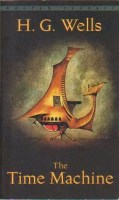
Earlier this week I tweeted about the search by UCLA law professor Ted Parsons for reading/viewing to assign for his upcoming seminar “Law in Futurist Social Visions.” The course will use speculative fiction to explore challenges that may arise from three trends he sees shaping law and government:
- major technology-driven advances in human capabilities and/or longevity (whether of widespread or limited availability);
- severe environmental deterioration (realized or imminent);
- blurring of the boundary between human and non-human consciousness, e.g., through advances in AI, alternative substrates for human consciousness, or encounters with non-human intelligences.
Parsons is looking for suggestions of “works of science fiction (or other futurist fiction) that contain detailed and interesting descriptions of how law or government work in the speculative future world where the story is set.” This article by his colleague Eugene Volokh suggests some works to see that list (including several episodes of Battlestar Galactica, which will no doubt delight law students looking for an excuse to add binge video watching to their summer to-do list).
Parsons’ quest inspired me to revisit my own summer reading stack, which is at the moment grimly devoted to nonfiction works such as the Millennium Projects latest State of the Future report. So, I am recruiting your help to compile a list of works of futurist fiction (print, TV or film) that contain detailed and interesting descriptions of how museums work in the speculative future world where the story is set.
Here are a couple of titles to get the list started:
 H.G. Wells’ The Time Machine. In chapter eight the Time Traveller explores the Palace of Green Porcelain (a museum), looking for tools to fight the dreaded Morlocks. (Since most of the collections are deteriorated beyond use, he pries a piece of metal off an industrial machine on display to use as a mace. So much for long-term conservation.)
H.G. Wells’ The Time Machine. In chapter eight the Time Traveller explores the Palace of Green Porcelain (a museum), looking for tools to fight the dreaded Morlocks. (Since most of the collections are deteriorated beyond use, he pries a piece of metal off an industrial machine on display to use as a mace. So much for long-term conservation.)Paolo Baucigalupi’s The Windup Girl, which I reviewed on the Blog a few years ago. This is a stretch—museums don’t play a feature role in the work, but seed repositories (which as living stock collections are a kind of first cousin to museums) are the major source of Thailand’s wealth in the dystopic future in which the story takes place.
Ideally, the fiction will include an actual museum, in a way that is integral to the plot, and sheds light on how museums might reflect and shape that future.
Use the comments section, below, to add your own favorite works of museo-centric futurist fiction to the list. Thank you!
Skip over related stories to continue reading article








Comments